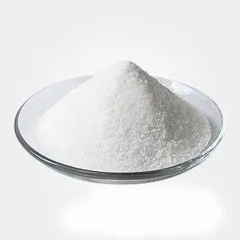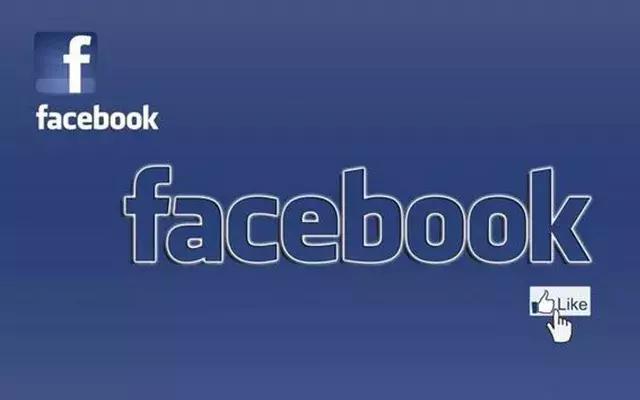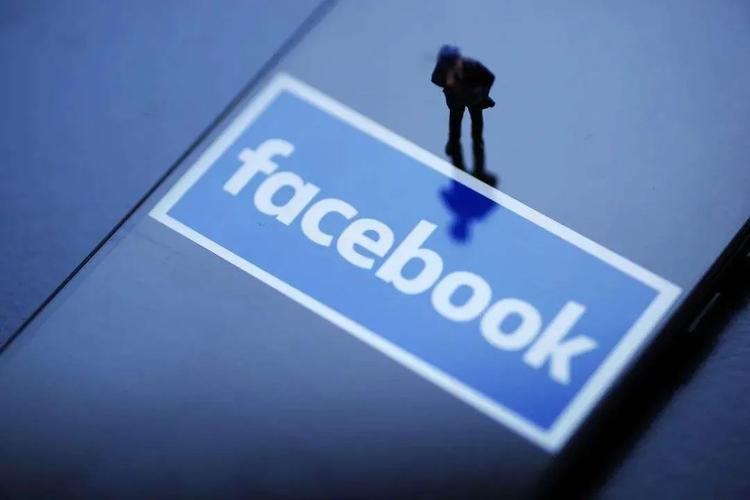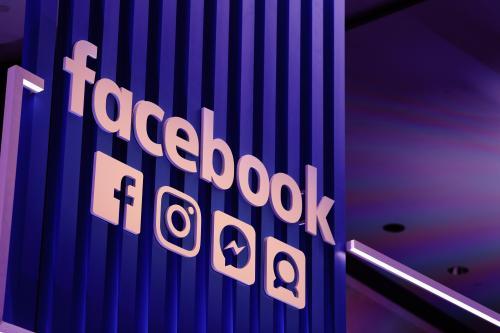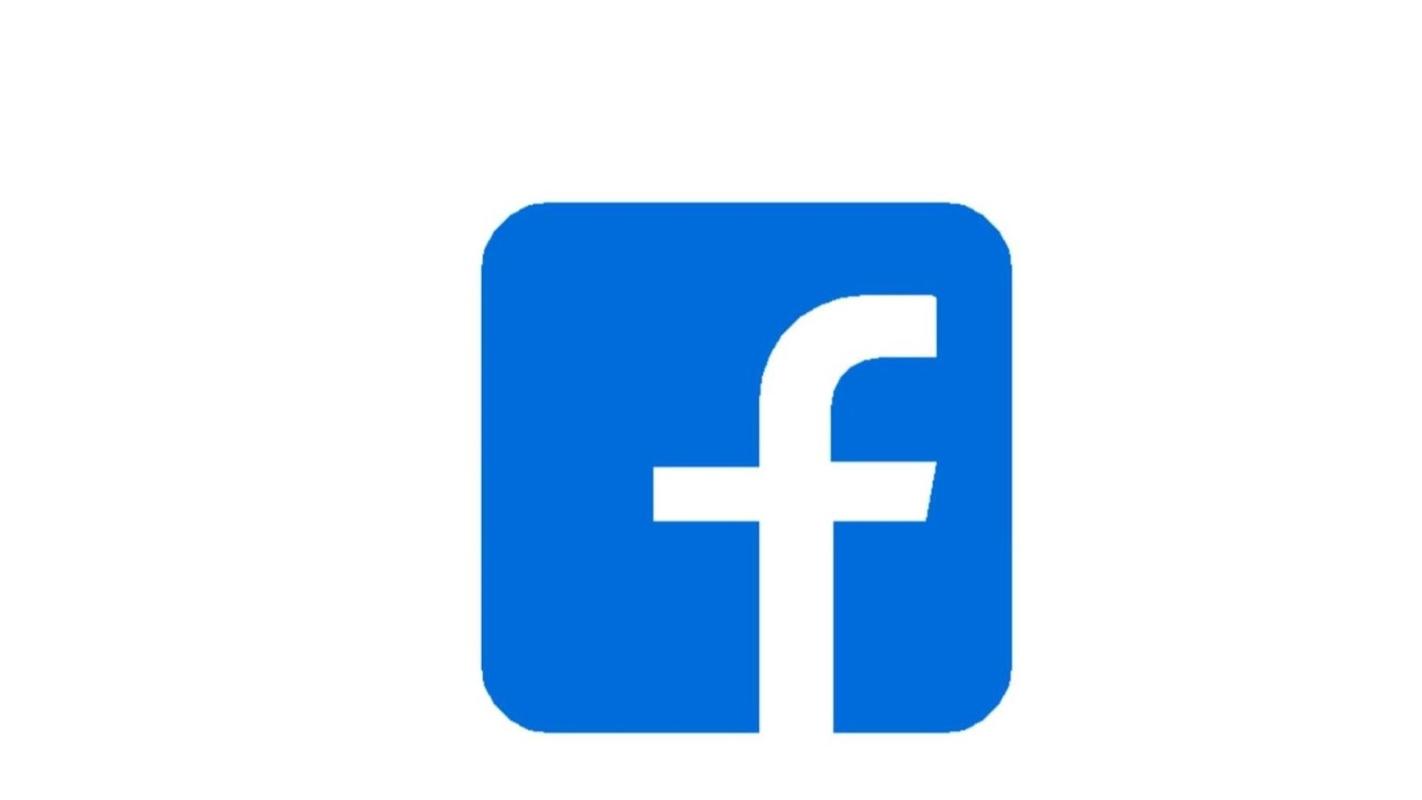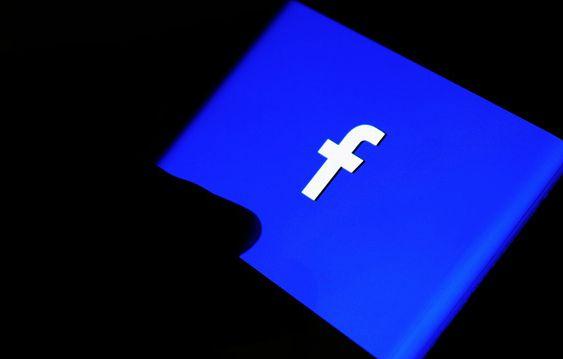The entry period for the “Luoyang in Its Heyday, Shared with the World— ‘iLuoyang’ International Short Video Competition” has now concluded with great success. Attracting participants from across the globe, the competition received more than 1,300 submissions from creators in 19 countries, including the United States, Sweden, South Korea, Yemen, Germany, Iran, Mexico, Morocco, Russia, Ukraine, and Pakistan. Through the lenses of these international creators, the ancient capital of Luoyang was showcased from a fresh, global perspective, highlighting its enduring charm and cultural richness. After a thorough review process, the video titled “Luoyang in Its Heyday, Shared with the World” was honored with the Jury Grand Prize. The award-winning piece is now available for public viewing—we invite you to watch and enjoy.
Alumina Ceramic Blocks: Structural and Functional Materials for Demanding Industrial Applications alumina ceramic components inc
1. Material Principles and Crystallographic Residence
1.1 Phase Composition and Polymorphic Habits
(Alumina Ceramic Blocks)
Alumina (Al Two O TWO), particularly in its α-phase form, is among one of the most widely utilized technical porcelains because of its exceptional equilibrium of mechanical stamina, chemical inertness, and thermal stability.
While aluminum oxide exists in several metastable phases (γ, δ, θ, κ), α-alumina is the thermodynamically stable crystalline structure at heats, characterized by a dense hexagonal close-packed (HCP) arrangement of oxygen ions with light weight aluminum cations occupying two-thirds of the octahedral interstitial websites.
This bought framework, referred to as corundum, gives high lattice power and solid ionic-covalent bonding, leading to a melting point of roughly 2054 ° C and resistance to phase transformation under severe thermal conditions.
The transition from transitional aluminas to α-Al ₂ O four usually takes place above 1100 ° C and is accompanied by significant quantity shrinking and loss of surface area, making phase control important during sintering.
High-purity α-alumina blocks (> 99.5% Al Two O THREE) display superior efficiency in severe environments, while lower-grade make-ups (90– 95%) might include additional stages such as mullite or glassy grain boundary stages for affordable applications.
1.2 Microstructure and Mechanical Integrity
The performance of alumina ceramic blocks is greatly affected by microstructural functions consisting of grain dimension, porosity, and grain boundary cohesion.
Fine-grained microstructures (grain size < 5 µm) usually offer greater flexural strength (as much as 400 MPa) and improved crack durability compared to grainy equivalents, as smaller sized grains impede crack breeding.
Porosity, even at reduced degrees (1– 5%), dramatically minimizes mechanical strength and thermal conductivity, requiring full densification with pressure-assisted sintering approaches such as hot pushing or hot isostatic pressing (HIP).
Ingredients like MgO are commonly introduced in trace quantities (≈ 0.1 wt%) to inhibit uncommon grain development during sintering, making sure uniform microstructure and dimensional security.
The resulting ceramic blocks show high hardness (≈ 1800 HV), outstanding wear resistance, and low creep rates at elevated temperature levels, making them appropriate for load-bearing and abrasive settings.
2. Manufacturing and Handling Techniques
( Alumina Ceramic Blocks)
2.1 Powder Preparation and Shaping Techniques
The manufacturing of alumina ceramic blocks starts with high-purity alumina powders originated from calcined bauxite via the Bayer process or synthesized through precipitation or sol-gel courses for greater purity.
Powders are milled to attain narrow fragment size circulation, improving packing density and sinterability.
Forming into near-net geometries is achieved through various developing strategies: uniaxial pressing for easy blocks, isostatic pressing for consistent density in complex forms, extrusion for lengthy sections, and slide casting for complex or large elements.
Each technique affects green body thickness and homogeneity, which straight impact final buildings after sintering.
For high-performance applications, progressed forming such as tape spreading or gel-casting may be used to attain superior dimensional control and microstructural uniformity.
2.2 Sintering and Post-Processing
Sintering in air at temperature levels between 1600 ° C and 1750 ° C allows diffusion-driven densification, where bit necks grow and pores reduce, resulting in a fully dense ceramic body.
Atmosphere control and specific thermal profiles are necessary to prevent bloating, bending, or differential shrinking.
Post-sintering procedures include ruby grinding, splashing, and polishing to attain tight tolerances and smooth surface area finishes called for in securing, moving, or optical applications.
Laser cutting and waterjet machining enable precise customization of block geometry without generating thermal stress and anxiety.
Surface area therapies such as alumina coating or plasma splashing can further enhance wear or deterioration resistance in customized solution problems.
3. Functional Residences and Performance Metrics
3.1 Thermal and Electrical Habits
Alumina ceramic blocks display modest thermal conductivity (20– 35 W/(m · K)), considerably higher than polymers and glasses, enabling efficient heat dissipation in electronic and thermal monitoring systems.
They preserve structural honesty approximately 1600 ° C in oxidizing ambiences, with low thermal growth (≈ 8 ppm/K), contributing to outstanding thermal shock resistance when properly made.
Their high electric resistivity (> 10 ¹⁴ Ω · centimeters) and dielectric stamina (> 15 kV/mm) make them perfect electrical insulators in high-voltage atmospheres, including power transmission, switchgear, and vacuum cleaner systems.
Dielectric consistent (εᵣ ≈ 9– 10) remains steady over a large frequency variety, sustaining use in RF and microwave applications.
These properties allow alumina blocks to operate accurately in environments where natural materials would weaken or stop working.
3.2 Chemical and Environmental Toughness
One of one of the most useful characteristics of alumina blocks is their exceptional resistance to chemical attack.
They are very inert to acids (other than hydrofluoric and hot phosphoric acids), alkalis (with some solubility in strong caustics at raised temperatures), and molten salts, making them suitable for chemical processing, semiconductor manufacture, and pollution control equipment.
Their non-wetting behavior with several liquified steels and slags allows use in crucibles, thermocouple sheaths, and furnace linings.
Additionally, alumina is safe, biocompatible, and radiation-resistant, expanding its utility right into clinical implants, nuclear protecting, and aerospace components.
Very little outgassing in vacuum cleaner environments even more qualifies it for ultra-high vacuum cleaner (UHV) systems in research and semiconductor manufacturing.
4. Industrial Applications and Technical Integration
4.1 Structural and Wear-Resistant Parts
Alumina ceramic blocks work as important wear parts in markets ranging from extracting to paper manufacturing.
They are used as liners in chutes, receptacles, and cyclones to withstand abrasion from slurries, powders, and granular products, substantially extending life span contrasted to steel.
In mechanical seals and bearings, alumina blocks provide low friction, high solidity, and deterioration resistance, lowering upkeep and downtime.
Custom-shaped blocks are incorporated into reducing tools, passes away, and nozzles where dimensional security and edge retention are vital.
Their light-weight nature (thickness ≈ 3.9 g/cm FOUR) additionally adds to power cost savings in moving parts.
4.2 Advanced Engineering and Arising Utilizes
Beyond traditional duties, alumina blocks are increasingly used in innovative technological systems.
In electronics, they work as shielding substratums, heat sinks, and laser tooth cavity elements due to their thermal and dielectric residential properties.
In power systems, they act as strong oxide gas cell (SOFC) elements, battery separators, and combination activator plasma-facing materials.
Additive manufacturing of alumina through binder jetting or stereolithography is emerging, allowing complex geometries previously unattainable with conventional creating.
Crossbreed frameworks incorporating alumina with steels or polymers through brazing or co-firing are being established for multifunctional systems in aerospace and protection.
As material science advances, alumina ceramic blocks continue to advance from easy architectural components right into active parts in high-performance, sustainable engineering solutions.
In summary, alumina ceramic blocks represent a fundamental course of advanced ceramics, combining robust mechanical performance with exceptional chemical and thermal stability.
Their convenience throughout commercial, digital, and scientific domains highlights their long-lasting value in modern-day design and technology development.
5. Supplier
Alumina Technology Co., Ltd focus on the research and development, production and sales of aluminum oxide powder, aluminum oxide products, aluminum oxide crucible, etc., serving the electronics, ceramics, chemical and other industries. Since its establishment in 2005, the company has been committed to providing customers with the best products and services. If you are looking for high quality alumina ceramic components inc, please feel free to contact us.
Tags: Alumina Ceramic Blocks, Alumina Ceramics, alumina
All articles and pictures are from the Internet. If there are any copyright issues, please contact us in time to delete.
Inquiry us
Spherical Aluminum Nitride: Engineered Powder for Advanced Thermal Management and Composite Applications brushed aluminum
1. Material Fundamentals and Morphological Advantages
1.1 Crystal Structure and Innate Qualities
(TRUNNANO Aluminum Nitride Powder)
Spherical aluminum nitride (AlN) is a specialized ceramic powder form that keeps the extraordinary physical and chemical properties of bulk AlN while supplying boosted flowability, packing density, and diffusion characteristics due to its controlled round morphology.
Like traditional AlN, it takes shape in the hexagonal wurtzite framework, where solid covalent bonds between aluminum and nitrogen atoms confer high thermal security, exceptional electric resistivity, and a large bandgap of about 6.2 eV.
The most prized attribute of AlN is its high thermal conductivity, which can go beyond 170 W/(m · K )in solitary crystals and get to 140– 160 W/(m · K )in high-purity polycrystalline forms, far surpassing conventional fillers like alumina (≈ 30 W/(m · K)).
This efficiency develops from efficient phonon transportation, which is highly sensitive to latticework flaws, impurities– especially oxygen– and grain borders.
Oxygen contamination brings about the formation of aluminum openings and secondary stages such as Al Two O four or aluminum oxynitride (AlON), which scatter phonons and break down thermal efficiency.
For that reason, high-purity spherical AlN powders are synthesized and processed under rigorous conditions to minimize oxygen material, usually listed below 1000 ppm, guaranteeing optimal heat conduction in end-use applications.
1.2 Round Morphology and Functional Benefits
The transition from uneven or angular AlN fragments to spherical forms stands for a substantial innovation in powder design, driven by the needs of contemporary composite production and additive procedures.
Spherical particles display remarkable flowability due to decreased interparticle rubbing and surface area roughness, enabling consistent feeding in automated systems such as screw feeders, vibratory hoppers, and powder-bed 3D printers.
This enhanced flowability equates into consistent dosing, lowered blocking, and improved procedure dependability in industrial settings.
Moreover, spherical powders attain greater packaging thickness compared to their angular equivalents, decreasing void web content when incorporated into polymer matrices or ceramic environment-friendly bodies.
Higher filler filling straight boosts the effective thermal conductivity of compounds without jeopardizing mechanical honesty or processability.
( TRUNNANO Aluminum Nitride Powder)
The smooth, isotropic surface area of round AlN also reduces anxiety focus points in polymer composites, enhancing mechanical toughness and dielectric strength.
These morphological advantages make round AlN especially suitable for applications requiring accuracy, repeatability, and high performance.
2. Synthesis Approaches and Industrial Manufacturing
2.1 Direct Nitridation and Post-Synthesis Spheroidization
The production of round light weight aluminum nitride involves either direct synthesis of round fragments or post-processing of irregular AlN powders to achieve sphericity.
One technique is the straight nitridation of molten light weight aluminum beads in a nitrogen-rich atmosphere, where surface area stress normally drives the formation of round fragments as light weight aluminum responds to form AlN.
This technique, while efficient, requires specific control of temperature level, gas circulation, and particle dimension circulation to prevent incomplete nitridation or cluster.
Alternatively, irregular AlN powders produced by means of carbothermal reduction (Al two O TWO + 3C + N TWO → 2AlN + 3CO) can be subjected to high-temperature plasma spheroidization.
In this process, angular bits are infused right into a thermal plasma jet (e.g., radiofrequency or DC plasma), where they melt for a little while and assume a round form as a result of surface area tension before quickly solidifying in trip.
Plasma treatment additionally helps detoxify the surface area by volatilizing surface area oxides, additionally improving thermal performance.
2.2 Quality Assurance and Surface Area Design
Making sure uniformity in fragment dimension circulation, sphericity, purity, and surface chemistry is important for industrial fostering.
Manufacturers utilize laser diffraction for particle size evaluation, scanning electron microscopy (SEM) for morphological examination, and X-ray photoelectron spectroscopy (XPS) to examine surface composition.
Sphericity is quantified using shape elements such as circularity or element ratio, with high-performance powders usually showing sphericity > 90%.
To boost compatibility with natural matrices, spherical AlN fragments are typically surface-treated with combining agents such as silanes or titanates.
These therapies improve interfacial adhesion in between the ceramic filler and polymer resin, reducing thermal border resistance and stopping filler agglomeration.
Hydrophobic coverings may additionally be put on minimize dampness absorption, which can degrade dielectric buildings and advertise hydrolysis in damp environments.
3. Applications in Thermal Management and Advanced Products
3.1 Polymer Composites for Electronics Product Packaging
Spherical AlN is increasingly made use of as a high-efficiency thermal filler in epoxy, silicone, and polyimide-based composites for electronic encapsulation, underfill materials, thermal user interface products (TIMs), and printed motherboard (PCBs).
In these applications, the objective is to dissipate warm from high-power semiconductor devices such as CPUs, GPUs, power amplifiers, and LED drivers.
The spherical morphology enables greater filler loading– often surpassing 70 vol%– while preserving reduced thickness, making it possible for very easy processing and thin-layer application.
This leads to composite thermal conductivities of 3– 8 W/(m · K), a significant renovation over unfilled polymers (≈ 0.2 W/(m · K)) and traditional fillers.
Its electrical insulation residential or commercial property makes certain that thermal improvement does not compromise dielectric security, making it optimal for high-voltage and high-frequency circuits.
3.2 Additive Production and Ceramic Handling
In additive manufacturing, particularly in binder jetting and discerning laser sintering (SLS), round AlN powders are important for achieving uniform powder bed density and constant layer spreading.
Their flowability makes certain defect-free layer deposition, while high packaging thickness enhances environment-friendly stamina and minimizes contraction during sintering.
Spherical powders also make it possible for the construction of complex-shaped ceramic parts with fine functions and outstanding dimensional accuracy, useful in aerospace, defense, and semiconductor tooling.
In conventional ceramic handling, spherical AlN improves the homogeneity of green bodies and lowers porosity in sintered parts, improving both thermal and mechanical efficiency.
4. Emerging Frontiers and Future Expectation
4.1 Next-Generation Electronic and Energy Systems
As electronic tools continue to diminish in size while raising in power density, the demand for innovative thermal management services grows exponentially.
Round AlN is poised to play a crucial duty in emerging modern technologies such as 5G/6G base stations, electric vehicle power components, and high-performance computing (HPC) systems, where thermal throttling limitations performance.
Its assimilation into liquid-cooled chilly plates, warmth spreaders, and ingrained cooling frameworks offers brand-new paths for system-level thermal optimization.
In energy storage, round AlN is being checked out as a thermally conductive however electrically protecting additive in battery separators and encapsulants to minimize thermal runaway in lithium-ion batteries.
4.2 Sustainability and Scalability Difficulties
Regardless of its benefits, prevalent adoption of round AlN encounters difficulties associated with set you back, energy-intensive synthesis, and environmental effect.
Plasma spheroidization and high-purity powder production need significant power input, motivating research study right into extra efficient and lasting manufacturing routes.
Recycling of AlN scrap and growth of alternate synthesis methods, such as solution-based or low-temperature procedures, are energetic areas of investigation.
Additionally, life process analysis and supply chain durability are ending up being essential considerations as international need for crucial raw materials magnifies.
In recap, spherical aluminum nitride stands for a transformative improvement in ceramic powder technology, integrating the innate thermal quality of AlN with crafted morphology for premium processability and performance.
Its function in allowing next-generation thermal monitoring services throughout electronic devices, energy, and progressed production emphasizes its tactical value in the evolution of high-performance products.
5. Provider
TRUNNANO is a supplier of boron nitride with over 12 years of experience in nano-building energy conservation and nanotechnology development. It accepts payment via Credit Card, T/T, West Union and Paypal. Trunnano will ship the goods to customers overseas through FedEx, DHL, by air, or by sea. If you want to know more about brushed aluminum, please feel free to contact us and send an inquiry.
Tags: aluminum nitride,al nitride,aln aluminium nitride
All articles and pictures are from the Internet. If there are any copyright issues, please contact us in time to delete.
Inquiry us
Facebook Expands Its Video Shadow Effect
Facebook Expands Video Shadow Effect to More Users
(Facebook Expands Its Video Shadow Effect)
Facebook now makes videos stand out more in user feeds. The company broadens its video shadow feature globally. This visual tweak adds a subtle shadow around video clips. The shadow effect highlights videos against text and images. It aims to catch the eye faster during scrolling.
The expansion follows successful tests in select markets. User engagement with videos increased during trials. So Facebook decided to roll it out widely. The update reaches iOS and Android users first. Desktop users will see it later this month.
This change helps creators and businesses. Their video content gets more visibility automatically. Videos might get more views and interactions. But Facebook confirms the shadow doesn’t alter video content itself. It functions purely as a visual border.
The feature activates by default for all eligible videos. Users cannot toggle the shadow on or off individually. Page owners need not adjust settings either. The system applies the effect uniformly.
Facebook states this aligns with its video-first strategy. The platform prioritizes video content increasingly. This shadow update joins other recent video enhancements. Past changes included larger video previews and sound prompts.
Analysts note this could shift user attention patterns. Videos might draw more clicks than static posts. Yet some users worry about increased visual clutter. Facebook says the shadow remains intentionally faint. It shouldn’t disrupt the overall browsing experience.
The update processes automatically via app updates. Users must run the latest Facebook version to see it. The shadow appears on all standard in-feed videos. It excludes live broadcasts and Stories for now.
(Facebook Expands Its Video Shadow Effect)
Facebook plans more video-focused features this year. Details remain undisclosed at this time. The company continues refining its video ecosystem. Video remains central to Facebook’s content approach.
Facebook Removes Misinformation About Literature
Facebook announced new action against false literature content on its platforms. The company removed a large number of posts and groups spreading wrong ideas about famous books and authors. These posts contained made-up facts and false historical claims about literature.
(Facebook Removes Misinformation About Literature)
Facebook found these posts contained harmful misinformation. The false information misled people about important literary works and their creators. This could damage understanding of cultural history and author legacies. Facebook decided this content broke its rules against spreading false facts.
The removed posts included false claims about author backgrounds and book meanings. Some posts wrongly changed the historical context of classic novels. Other posts invented events about writers’ lives that never happened. Facebook’s computer systems found much of this false content. People also reported many misleading posts.
Facebook explained its policies clearly ban spreading false information. The company stated these rules apply to all topics, including arts and literature. Facebook wants its platforms used for sharing real knowledge and ideas. Misleading posts about books confuse people and harm real literary discussion.
(Facebook Removes Misinformation About Literature)
Facebook stated it will keep working to find and remove false content. The company uses technology and human reviewers for this task. Facebook also encourages users to report suspicious posts they see. The company believes protecting accurate information about literature is important. Facebook will continue updating its methods to fight misinformation. This effort is part of its wider work to promote reliable content online.
Facebook Updates Its Policy on Scams
Facebook announced new rules today. The company is strengthening its fight against scams. These updates target deceptive money-making schemes. Fake investment opportunities and other financial frauds are the focus.
(Facebook Updates Its Policy on Scams)
The changes cover Facebook and Instagram. Scammers often use fake celebrity endorsements. Misleading “get rich quick” ads are also a major problem. Facebook wants to stop these practices faster.
The updated policy clearly bans specific scam tactics. Fake promises of high investment returns are prohibited. Misrepresentation of money-making opportunities is not allowed. Facebook will remove violating content quickly.
Enforcement actions are increasing. Accounts repeatedly breaking these rules face removal. Facebook is also improving its detection systems. Artificial intelligence helps find scam patterns faster.
User safety is the main goal. Financial scams cause real harm. People can lose significant savings. Facebook wants its platforms safer for everyone.
Reporting tools are getting simpler. Users can flag suspicious posts or ads easily. Facebook teams will review these reports. The company urges people to be careful online.
Experts advise skepticism towards “too good to be true” offers. Verifying information before sending money is crucial. Facebook provides resources to help spot scams.
The company works with law enforcement and financial watchdogs. Sharing information helps track down criminals. This global effort targets scam networks.
(Facebook Updates Its Policy on Scams)
Facebook plans further updates as scammers change tactics. Protecting the community remains a top priority. Users can find the full updated policy details online.
Facebook Expands Its Video Playback Options
Facebook Expands Video Playback Options for Users
(Facebook Expands Its Video Playback Options)
Facebook announced new features today giving people more control over how they watch videos in their feed. This update focuses on making video viewing simpler and more flexible for everyone. Users often encounter videos automatically playing as they scroll. Now, Facebook offers clear ways to manage this experience directly on the video player.
The key change is a prominent sound toggle button placed directly on each video. People can easily tap this button to turn sound on or off instantly. This eliminates the previous need to open the video fully just to control audio. It provides immediate choice over whether to watch with sound or silently.
Additionally, the update introduces a dedicated pause button. This button appears clearly on the video itself. Users can pause playback without accidentally tapping the video and opening the full-screen view. It offers a straightforward way to stop a video momentarily while staying in the feed.
Facebook also improved video loading and playback performance. Videos should start playing faster and more reliably. This reduces frustrating delays or interruptions when users want to watch. The changes aim to make the overall video experience smoother and less disruptive during everyday browsing.
(Facebook Expands Its Video Playback Options)
These updates are rolling out globally starting today. They will be available to all Facebook users on mobile devices. The company stated these improvements respond directly to user feedback requesting better control. Facebook wants people to enjoy videos without unwanted noise or unexpected full-screen switches. The simpler interface puts basic playback controls right at users’ fingertips.
Facebook Tests AR Filters in Camera Effects
Facebook Tests New AR Filters in Camera Effects Platform
(Facebook Tests AR Filters in Camera Effects)
MENLO PARK, CA – Facebook started testing new augmented reality filters. This testing happens inside the Camera Effects platform. The goal is to give developers more tools. They want creators to build better interactive experiences.
These new AR filters let users change their surroundings in real time. Users see digital objects mixed with the real world through their camera. This is different from filters that only change a person’s face. Facebook wants to expand what creators can do.
Developers can use the Camera Effects platform tools. They can make these new environment-focused AR effects. Facebook provides the framework. Creators build the specific experiences. This testing phase helps Facebook see what works best.
Facebook sees this as important for social connection. People use AR effects a lot in videos and photos. More creative tools mean more fun ways to share. The company believes AR is key for future platforms.
The test includes several new filter types. Some add virtual objects to a room. Others change lighting or backgrounds dynamically. Users interact with these elements using their phone’s camera. Feedback from this test will shape the final tools.
This move helps Facebook compete with other social platforms. Many apps offer advanced AR features. Facebook wants its Camera Effects to be a leader. Giving developers powerful tools is part of that plan.
Access to these new filters is limited right now. Only select developers can try them during the test. Facebook plans a wider release later this year. They want to ensure the tools are stable and useful first.
(Facebook Tests AR Filters in Camera Effects)
The Camera Effects platform launched several years ago. It lets creators build AR for Facebook apps. Adding environmental filters is a big step. It moves beyond face filters alone. Facebook keeps investing in this creative space.
Facebook Adds New Reactions and Emoji Features
Facebook now offers more ways to react to posts. People can now express feelings beyond just “liking” something. The company added new reaction options and updated its emoji features. This change gives users better tools to show how they feel about content. The familiar Like button remains central. People can still tap it quickly. New options appear when users hold down the Like button. A wider range of reactions pops up. These include symbols for surprise, laughter, sadness, and support. Users might find expressing empathy easier now.
(Facebook Adds New Reactions and Emoji Features)
Facebook also refreshed its entire emoji set. The look of emojis across the platform is updated. Emojis look cleaner and more consistent. This update affects comments, messages, and reactions. Visual clarity is improved for everyone. The goal is making digital conversations feel more natural. People often rely on emojis to convey tone. Clearer visuals help prevent misunderstandings. These changes are available globally. Users everywhere see the new reactions and emojis. No app update is needed for most people. The features activate automatically.
(Facebook Adds New Reactions and Emoji Features)
Feedback from users helped shape these updates. Facebook listened to requests for more expressive tools. People wanted more than just a thumbs-up. The new reactions offer subtlety. Someone might react with a “care” emoji to show support during tough times. A laughing emoji fits a funny post better than a simple Like. This gives people more precise ways to engage. It helps others understand the reaction’s intent. Facebook believes this improves communication quality. More accurate reactions could also influence what people see. The News Feed algorithm considers reactions. Diverse reactions provide richer signals about content preferences. This might help tailor the feed experience over time. The changes are part of ongoing efforts to enhance user interaction. The platform evolves based on how people connect.
Twitter’s New ‘Twitter for Ancient Languages’
Twitter announces a new service called “Twitter for Ancient Languages”. This feature allows people to communicate using languages no longer spoken daily. Languages like Latin, Ancient Greek, and Sanskrit are included. The goal is to connect scholars and fans of history globally.
(Twitter’s New ‘Twitter for Ancient Languages’)
Twitter saw a rising interest in ancient texts online. People shared quotes and discussed old languages. The company decided to build tools specifically for these languages. The new service makes typing complex characters easier. Special keyboards appear when users select an ancient language. This solves problems with standard keyboards.
Scholars can now share their research directly. They can post findings or ask questions in the original language. Students learning Latin or Greek can practice more. They see real-time examples from experts. History fans can explore ancient thoughts in a modern way.
The service includes tools for accurate writing. It checks character usage and helps with spelling. It recognizes different writing styles used centuries ago. This ensures messages are clear and correct. Users can follow hashtags related to specific languages. Topics like #ClassicalLatin or #AncientGreekPhilosophy will group discussions.
Twitter believes this fosters deeper understanding of the past. It brings ancient wisdom into today’s conversations. Experts can debate interpretations instantly. Learners get immediate feedback. The platform hopes to build a unique community. This community bridges thousands of years through shared language.
(Twitter’s New ‘Twitter for Ancient Languages’)
Access starts next month. Users activate it in their account settings. They choose their preferred ancient language. Twitter provides guides and resources for beginners. The company plans to add more languages later. Support for Egyptian Hieroglyphs is under development. This follows the initial launch languages. The service is free for all Twitter users.




